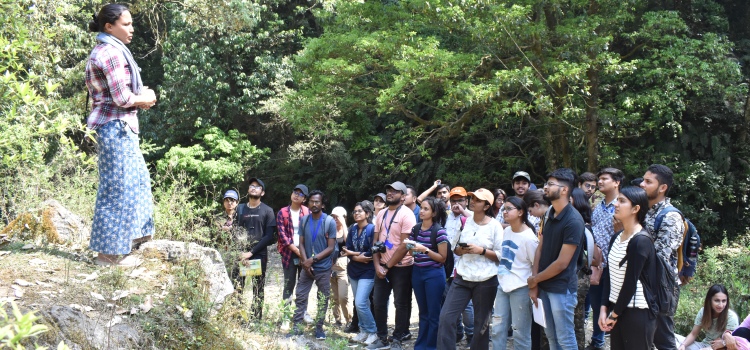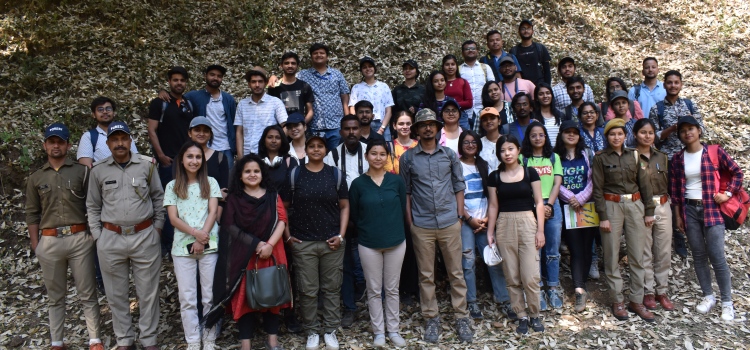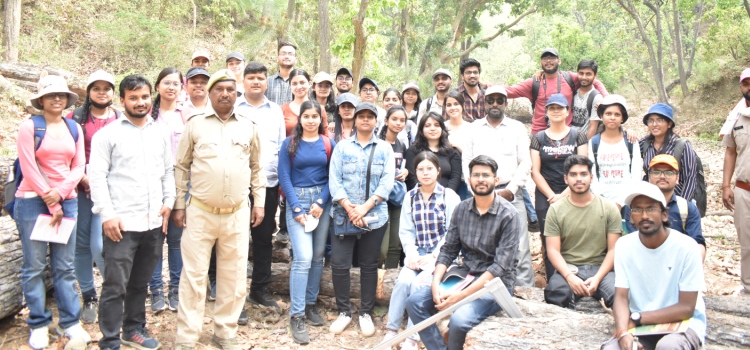M.Sc. Environment Management Practical Demonstration cum Study Tour to Benog Wildlife Sanctuary, Mussoorie
On April 8, 2022, we visited Mussoorie Wildlife Sanctuary as a part of a field excursion. Binog Wildlife Sanctuary (28° 60’ - 31°28’ N, 70°49’ - 80°60’E) is also known as Mountain Quail Wildlife Sanctuary in Mussoorie Forest Division of Dehradun district, Garhwal Himalaya. It lies in the outermost ridges of Himalaya that runs approximately in west-east direction. The Himalayan Mountains, one of the most remarkable physical features in the Indian Himalayan region, represent a structurally complex, tectonically active, biologically diverse, and ecologically fragile and young Eco-region. These mountains are a reservoir of many natural resources, of which the vegetational aspect is predominant.
The forest type of the sanctuary is Himalayan Moist Temperate Forest which comprises 70 per cent of the total area. The dominant species is Quercus Leucotrichophora. Wildlife Sanctuary also contains 5 per cent of the total area occupied by Himalayan Subtropical Pine Forest in which dominant species are Pinus roxburgii, Pinus wallichiana, Cedrus Deodara. Around 25 per cent of the area of the wildlife sanctuary is covered with grasslands. Dominated tree species in the wildlife sanctuary is Quercus leucotrichophora known as Banj oak. It is called as green gold of Uttarakhand. It has good water retention properties which keep the soil moist. Due to its high calorific value and good burning properties, it is extensively lopped as fuelwood. The leaves are extensively used as cattle fodder. The leaf litter is rich in nitrogen and makes an excellent compost fertiliser. The timber, while hard and strong and used for agricultural implements, is not particularly valuable as it is hard to work Ficus species have asynchronous fruiting seasons in between the species and also within the species. So there is always availability of food from ficus species which is important for the wildlife in the jungle.
There is a total of 20 species of mammals. Some of the Flagship spp. Asiatic black bear and other animals like leopard, barking deer, and mountain goat are found here. There are about 100 spp. Of birds and 120 butterflies. Through the Benog Wildlife Sanctuary “Ringalinar Nala” (water stream) flows, the source of popular tourist destination Kempty Fall. This fall is a tourist place and is an important revenue generator for localities. So apart from biodiversity or ecological services, this sanctuary also provides economic services to local people.
By
Kumari Madhuri
M.Sc. Environment Management (II Semester)




